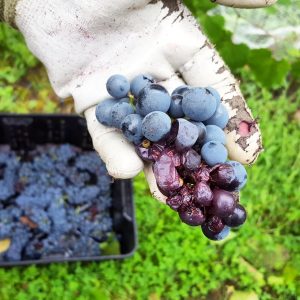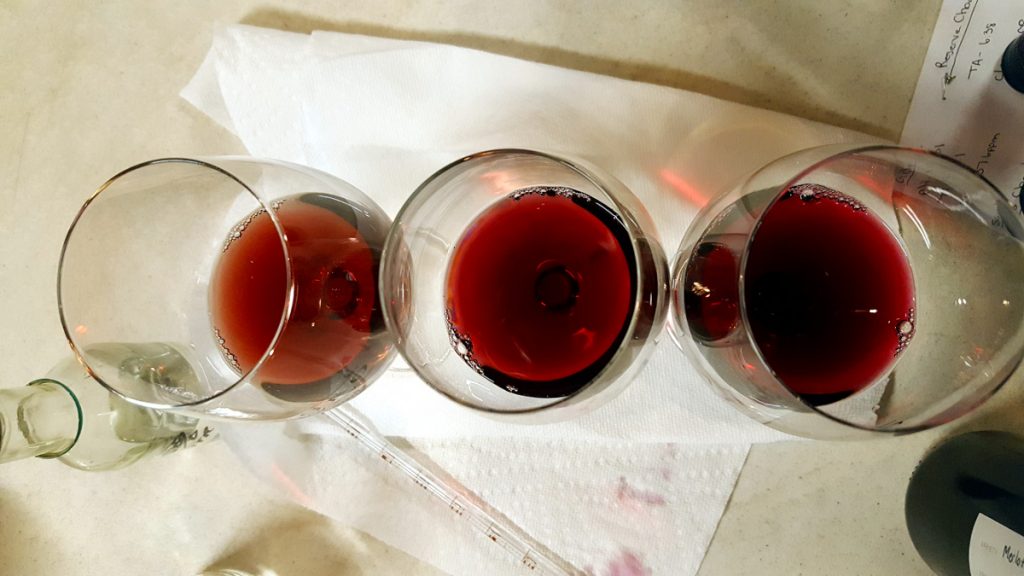
Did the 2018 vintage leave you with wines that are less than desirable?
If so, you’re not alone.
Winemakers in hot, consistently dry climates get adjusted to the routine of making wine. But if you’re a winemaker in a region that experiences vintage variation, routine winemaking practices can be your worst enemy. In years that provide disease heavy fruit, winemakers have to turn away from usual processes and use educated trial and error to fix problem wine.
In years that provide problem fruit, how do you get a wine to a place where it is considered commercially acceptable… perhaps even good?
Check Physical Stabilities
Wines produced from disease-heavy fruit seem to have protein instability issues that may not be typical during average vintage years. If you want to ensure your white and rosé wines remain clear post-bottling, it is worth getting the protein stability analyzed.
As with protein instabilities, tartrate instabilities can be inconsistent with vintage years like 2018.
Tartrate stability is rarely checked by many smaller (<10,000 case annual production) wineries. Many opt to put every wine through some form of cold stability, natural or seeded. Nonetheless, in order for natural cold stability to be effective, the wine must be held at a specific temperature for at least 10 days for white wines, and sometimes over 14 days for red wines. A winemaker should not assume that conducting a form of cold stabilization renders the wine cold stable. Confirmation through cold conductivity testing is recommended.
Alternatively, winemakers may opt to add tartrate inhibitor substances like CMC (carboxymethylcellulose) to the wine. The addition of CMC is useful for wineries that opt to avoid the cold stabilization process. Some have found CMC has limited efficacy in red wines. However, its addition offers a lot of flexibility for white, rosé, and sparkling wines. If you do choose to add CMC, remember to add this prior to the sterile filtration process and provide the wine with the recommended amount of stabilization time prior to filtration and bottling.
Chitosan Fining
This past year, I found chitosan fining agents relatively helpful in a number of different winemaking situations.
Chitosan fining does not eliminate microorganisms from your wine; however, it reduces microbial populations to a more manageable concentration. I’ve had some success using chitosan fining to reduce the rate of acetic acid spoilage post-primary fermentation, treating wine films, and cleaning up a wine microbially prior to malolactic fermentation when we noticed the wine was spoiling. Chitosan fining may also help clean up a low-volume wine and avoid filtration, offering cost and labor savings for the winery.
A word to the wise: double check dosage rates, applications, and storage directions with your enological supplier. There is quite a bit of variation in the chitosan fining agent’s application depending on which company produced the product.
Monitor VA and Sulfur Dioxide Levels
Both volatile acidity (VA) and sulfur dioxide concentrations can provide clues to problems forming in your wine if they are monitored over time.
At minimum, I recommend measuring the VA:
- post-primary fermentation,
- post-malolactic fermentation (MLF),
- every-other-month during barrel aging, and
- immediately pre-bottling.
This is especially important during vintages that produce disease-heavy fruit, which may retain more spoilage microorganisms post-fermentation. Most people cannot taste (not smell, but taste) acetic acid below 0.70 g/L. At this concentration, acetic acid is not detectible by smell. However, at this concentration, an enologist could measure and conclude acetic acid production is unusually high. When this concentration is reached, a winemaker can opt to:
- Observe the wine for potential microbiological contamination. Enartis Vinquiry has a great protocol on this for microscopic evaluation.
- Send a sample of the wine to an ISO-accredited wine lab for microbial confirmation.
- Ensure sulfur dioxide levels are adequate to inhibit any further spoilage microorganism growth at the wine’s pH. This will reduce further accumulation of acetic acid.
- Review and ensure headspace management practices are adequate.
- Potentially treat the wine to reduce microorganism populations.
- Monitor the wine more frequently for additional increases in VA.
The same practices apply to sulfur dioxide concentrations. High pH wines, wines with oxygen exposure, and wines produced from disease-heavy fruit may render sulfur dioxide additions less effective. The Demystifying Sulfur Dioxide webinar reviews principles and practices associated with sulfur dioxide additions to wine.
Avoid Barreling “Bleh” Wines
Some winemakers assume that adding an uninteresting wine, especially a wine that was affected by rot, to a barrel will help provide mouthfeel and flavor. However, I rarely see this practice working to the winemaker’s advantage.
If you want oak integration, turn to oak adjuncts/alternatives. The winemaker has greater control over flavor integration and can better minimize oxygen integration that comes from barreling a wine. Remember, wine barrels are oxidative winemaking tools; they can dissolve a fair amount of oxygen into the wine over time.
If you need some assistance finding a good oak supplier, please read a past post on Petraea Plus.

Provide Time for Bench Trials
Wines produced from challenging vintages may require extra consideration and tinkering get to a good place. This practice can be a hard sell, but it’s an important step in the winemaking process. Challenging vintages may force winemakers outside of their comfort zone in terms of trying new blends, fining agents, or additives (e.g., polysaccharides, tannins, gums).
If your goal is to bottle by April, you should start tasting and evaluating your wines by February. DGW Clients can find checklist timelines (titled: Production Guide: Pre-Bottling Prep) for these winemaking steps in the website’s Cellar Tools.
During tastings, identify holes in the wine, realistically assess if the wine is varietal, and determine if something needs to be fixed prior to conducting blending trials.
How to Use Those Subpar Wines
Early in March, I presented options for how to use wines produced from disease-heavy fruit at the annual Grape Expectations conference in New Jersey. However, given many winemakers could not attend this conference, I’m going to review some of these core concepts in the March Darn Good Winemakers session. If you need help getting something acceptable out of a wine you’re disappointed in, consider joining the Darn Good Winemakers network.
The webinar, Creatively Perfecting Wines from Challenging Vintages, will cover:
- Basic lessons learned from challenging harvest years.
- A review of post-fermentation practices discussed in this article.
- Options for creating clean, consumer-friendly wines from wines that may not have been desirable.
This webinar will also provide you with a list of resources for future challenging vintages.
Creatively Perfecting Wines from Challenging Vintages is scheduled for March 26, 2019 at 4:00 PM (EST). Like all Darn Good Winemakers sessions, the webinar will be recorded and available to watch for all registered Darn Good Winemakers and DGW clients.
